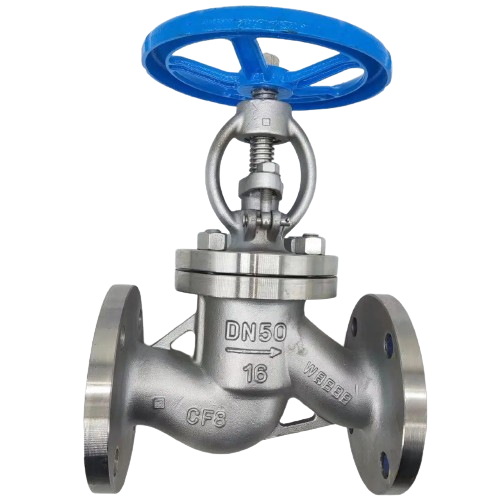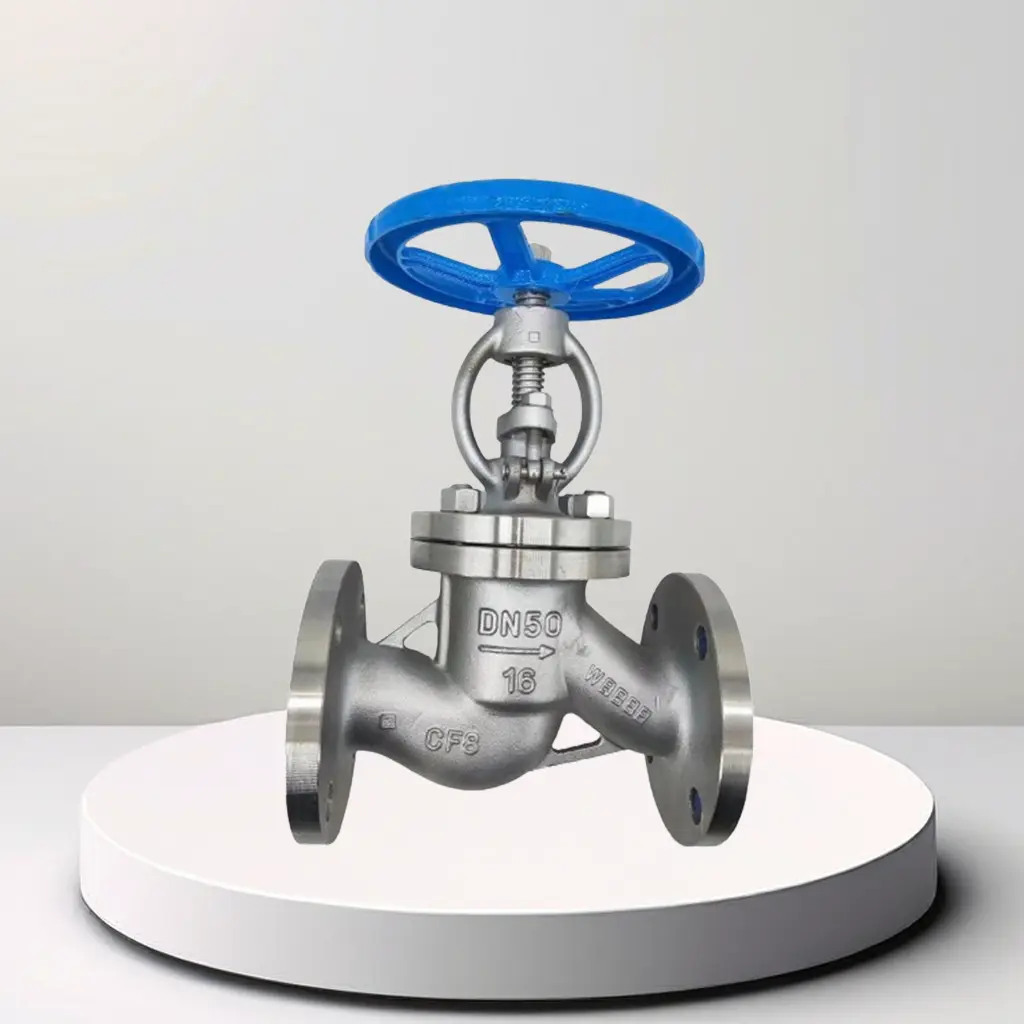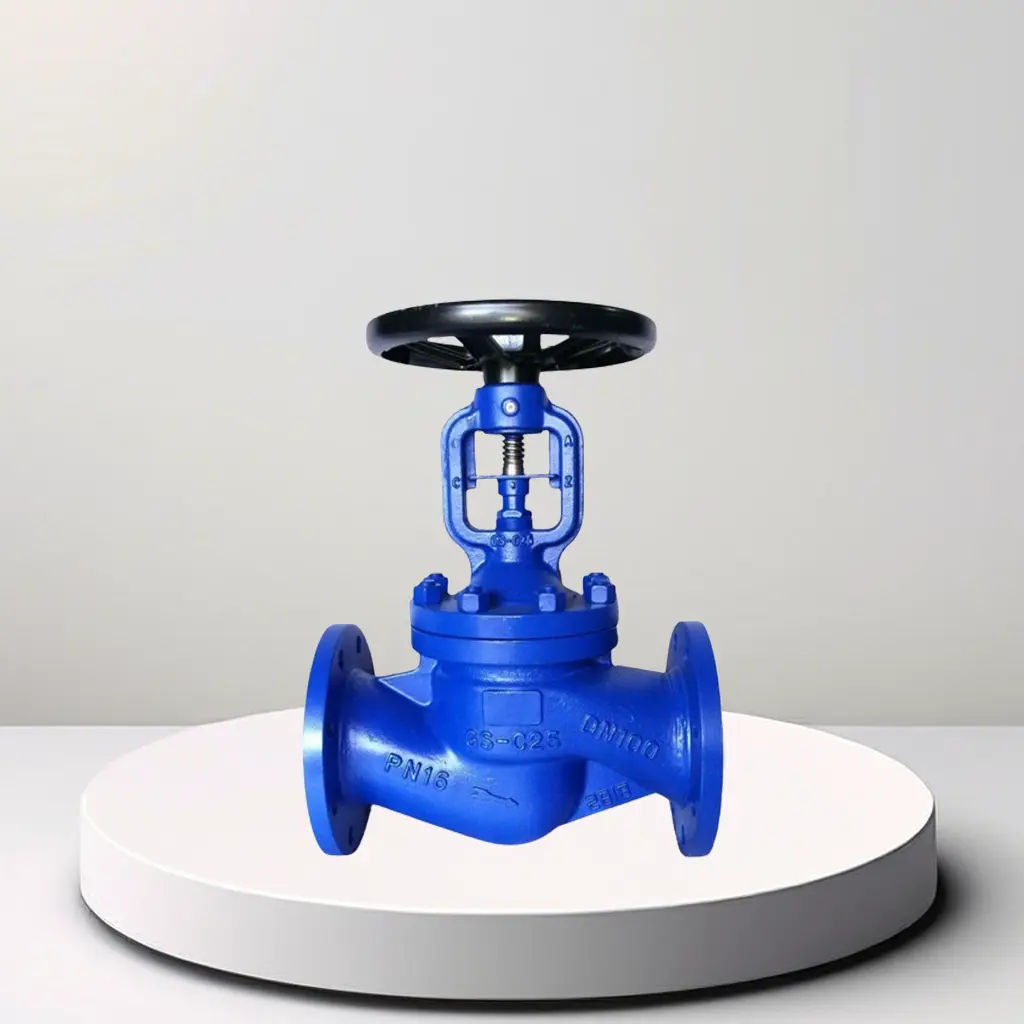Product Description
A stainless steel bellows seal globe valve is a sophisticated type of globe valve engineered to provide exceptional sealing performance and reliability in critical applications. Here’s a comprehensive overview covering its components, working principle, advantages, applications, and installation considerations:
Components and Design:
1. Body and Bonnet: The main body and bonnet of the valve are typically made from stainless steel (grades such as 304 or 316), known for its superior corrosion resistance and durability. These components house the internal workings of the valve and provide robustness for handling high pressures and temperatures.
2. Bellows Assembly: One of the distinguishing features of a bellows seal globe valve is the bellows assembly. This assembly surrounds the valve stem and is crucial for achieving a leak-tight seal. The bellows are typically made from stainless steel and consist of multiple convolutions that allow for axial movement of the stem while maintaining a seal against the fluid.
3. Valve Stem: The stem connects the actuator (such as a handwheel or actuator motor) to the valve disc or plug. It transfers the motion to open or close the valve and extends through the bellows assembly.
4. Disc or Plug: Inside the valve body, the disc or plug is attached to the valve stem. When the valve is operated, the disc moves against the valve seat to regulate or shut off the flow of fluid through the valve.
5. Seating Surface: The seating surface is where the disc or plug makes contact with the valve seat, ensuring a tight shut-off to prevent fluid leakage when the valve is closed.
Working Principle:
1. Flow Control: Fluid enters the valve through the inlet port and flows into the valve body. The valve stem, connected to the disc or plug, adjusts the position of the disc to control the flow rate through the valve.
2. Bellows Seal Operation: When the valve is closed, the bellows assembly compresses to seal tightly around the valve stem. This design eliminates the need for traditional packing glands and reduces the risk of stem leakage or fugitive emissions.
3. Leak Prevention: The bellows seal provides a reliable barrier against fluid leakage, even in challenging conditions such as high pressures, corrosive environments, or temperature variations.
Advantages:
1. Superior Sealing Performance: Bellows seal technology ensures a tight seal against leakage, enhancing safety and environmental compliance in applications where fluid containment is critical.
2. Corrosion Resistance: Stainless steel construction provides excellent resistance to corrosion, making the valve suitable for a wide range of industrial applications, including chemical processing, oil and gas, pharmaceuticals, and more.
3. Longevity and Durability: Stainless steel materials and bellows assembly design contribute to extended service life, reducing maintenance requirements and downtime.
4. Environmental Compliance: Minimizes fugitive emissions and complies with environmental regulations and industry standards for leakage control.
5. Versatility: Suitable for handling various fluids, including aggressive chemicals, steam, water, and gases, in industries requiring stringent fluid control and reliability.
Applications:
1. Chemical Processing: Used in handling corrosive chemicals and fluids to ensure safe and efficient operation without the risk of leaks.
2. Oil and Gas: Critical in pipelines, refineries, and offshore platforms for controlling the flow of hydrocarbons and gases, maintaining operational safety and reliability.
3. Pharmaceuticals: Ensures sterile conditions in pharmaceutical manufacturing processes by preventing contamination and maintaining product purity.
4. Power Generation: Used in steam systems and nuclear power plants to regulate the flow of water and steam, ensuring efficient energy production and safety.
5. HVAC Systems: Controls the flow of water and refrigerants in heating, ventilation, and air conditioning systems, optimizing energy efficiency and environmental performance.
Installation and Maintenance:
1. Proper Orientation: Install the valve according to the flow direction indicated on the valve body, ensuring optimal performance and sealing effectiveness.
2. Material Compatibility: Verify compatibility with the fluid handled and environmental conditions to prevent corrosion and ensure longevity.
3. Regular Inspection: Schedule periodic inspections of the bellows assembly and valve internals to detect wear or damage, performing maintenance as recommended by the manufacturer.
4. Actuation Options: Consider valve actuation methods such as manual operation with a handwheel or automated control with actuators for remote operation and system integration.
In summary, a stainless steel bellows seal globe valve is a sophisticated and reliable solution for achieving superior sealing performance and preventing fluid leakage in critical industrial applications. Its robust construction, advanced sealing technology, and corrosion-resistant materials make it indispensable in environments where safety, reliability, and environmental compliance are paramount.


